Holiday Pearl Sale - 15% Off
& Free 2-Day FedEx (USA orders)
Holiday Pearl Sale - 15% Off
& Free 2-Day FedEx (USA orders)

Q: How did you get into pearling?
Quite by chance. Back in 1990, I was studying my B.Sc. in Aquaculture and we were looking to start our own aquaculture research program, since all other programs (shrimp & fish mainly) were full. We decided on Pearl Culture after reading Fred Ward’s ‘The Pearl’ article in NatGeo magazine and another article about Pearl Culture in Mexico. Then in 1994 we finally had the full support of our University system (ITESM): we only needed to provide proof we could grow pearls and we succeeded in growing mabé pearls in 1993, our first round cultured pearls appeared in 1995. By 1996 we were producing 50,000 mabé pearls and by the year 2000 we had our first commercial cultured pearl harvest.
So, it was mainly a dark desire to succeed in growing pearls where many others had failed and to revive Mexico’s pearling tradition.
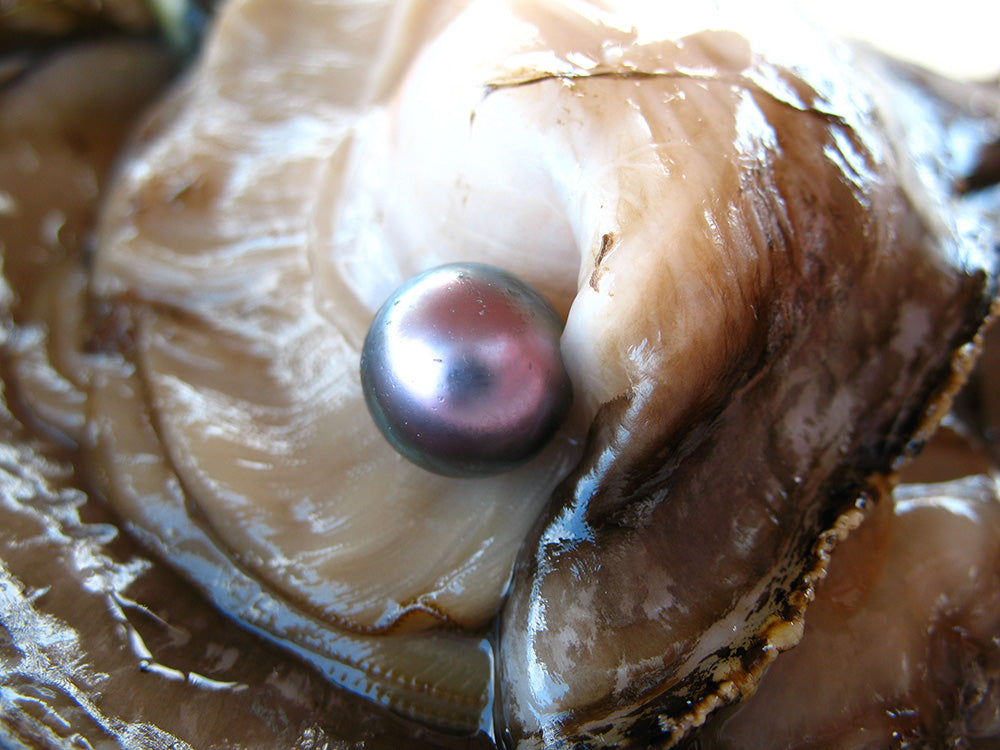
A Gorgeous Sea of Cortez Pearl Treasure at Harvest Time
Q: Can you tell us about what the unique challenges are to running the only saltwater pearl farm in the Americas?
There are many. Maybe one that is particular to us is the loneliness of being ‘the National Pearling Industry’. In this sense you miss having colleagues to discuss common problems and you also need a sense of competition in order to keep advancing.
Another challenge is in the lack of industry services: since you are the only one, there are no companies that will cater to your particular needs and many services become exceedingly expensive.
Q: As a pearl farmer, you must be keenly aware of the many environmental challenges facing the industry, and I know you work to make your farm a sustainable practices farm. What does that entail?
A lot of work and a lot of money! These two things are very much needed to adhere to a sustainable operation. Why? Because you have your workers/employees spending their valuable (paid) time to spend on things that don’t really make any money for you, and you do have to keep your eyes on these ‘side-projects’, such as our protected (no fishing) zone: we keep our area off limits from all fishermen. This has made our farming area a little haven for the local marine species, but we are also spending much time managing this area for biodiversity’s sake.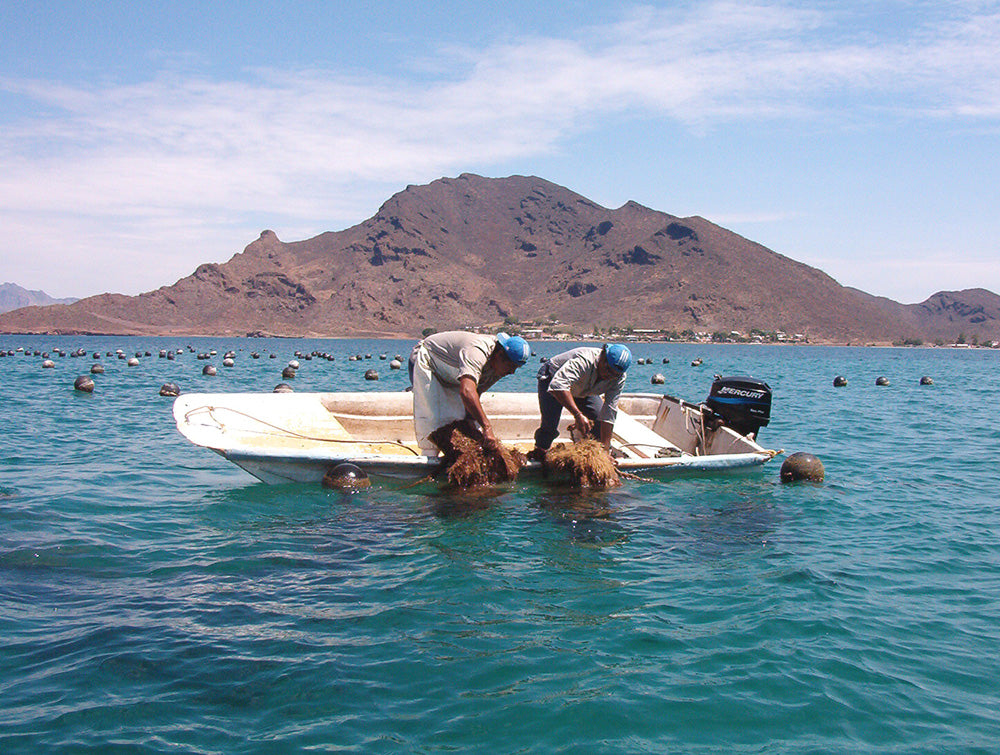
Workers pulling up the oyster lines for cleaning in Bocachibampo Bay, Guyamas, Mexico.
Q: So what is your favorite aspect of pearl farming?
I thought you would never ask! I think I love being in intimate contact with Nature. The smells, the water and sun, touching life and being touched by it. Every day I work with my oysters I have the chance of also being in contact with myriads of little fishes, crustaceans, urchins, sea cucumbers, bivalves, other mollusks and even birds and plants. You are surrounded by Life.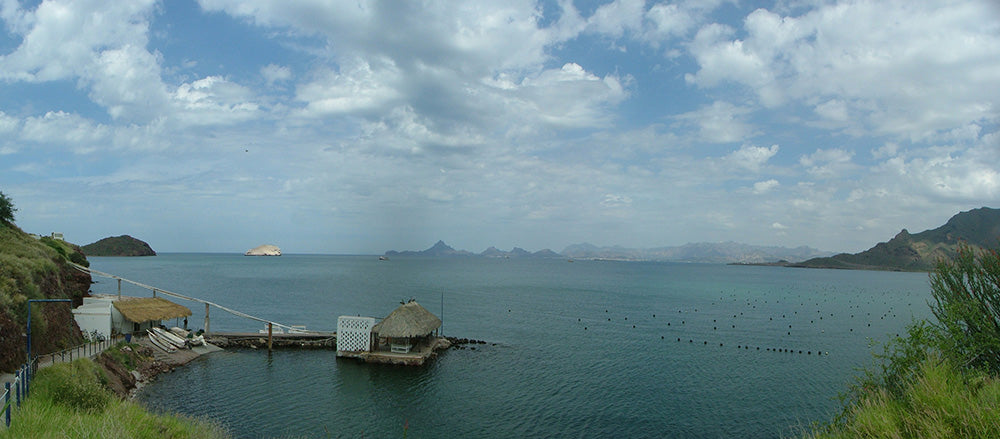
The Sea of Cortez Pearl Farm in Bacochibampo Bay. It can be lonely being the only operating pearl farm in the Gulf of California. The view is incredible though!
Q: In your view, what makes the Sea Of Cortez pearls different from any other pearl currently on the market?
There are several things that make my pearls special, so you can’t say it is just one thing. The first thing would be that the Cortez Pearl is produced by the Rainbow-lipped oyster, the only pearl oyster that belongs to genus Pteria that grows cultured pearls. All other marine oysters belong to genus Pinctada. So, this is unique all by itself.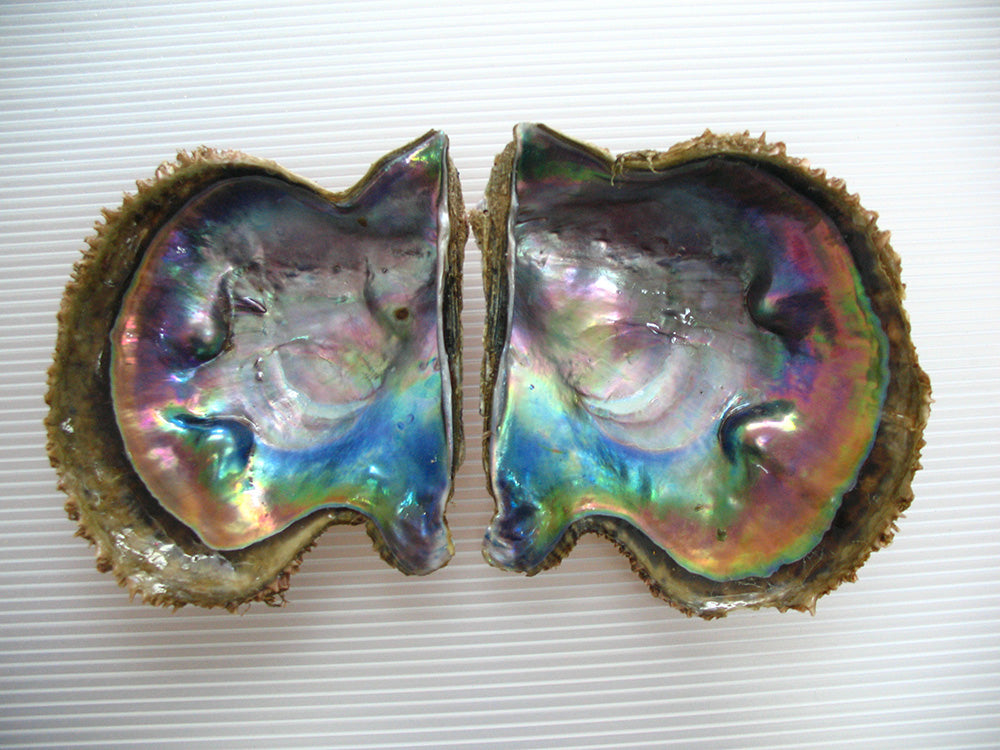
Magnificent Pteria sterna saltwater oyster- notice the mabé or blister pearls that were growing on the outer edge of the shell. The Pteria sterna is also known as the ‘Rainbow-lipped oyster’, it’s easy to see why!
Second: our pearl culturing system is not based on an imported methodology, but we designed it based on the peculiarities of our native species, and this also allowed us to become free of the shackles of the traditional pearling system where pearls are subject to uniformity and standardization.
For us, each pearl is unique: an individual, and should have the right to remain as such, so we oppose all forms of treatments: no bleaching, dyeing, polishing … Nada, zero, zilch, nothing should be done on pearls: either they are beautiful or not worth considering.
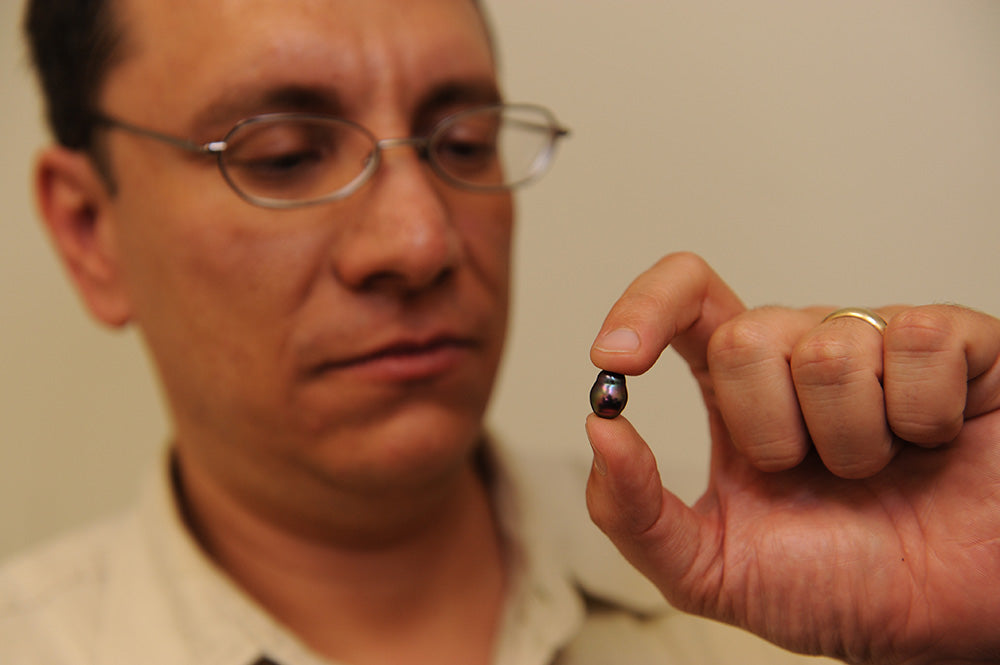
Douglas says of his pearls: “They are either beautiful, or they are not worth considering.” Sea of Cortez pearls have no color or luster treatments in any way.
And just to keep it short I would only add that our Cortez Pearls are the only ones that glow (fluoresce) different under a long wave UV light: white pearls glow with a blue-green color, black (and dyed) pearls do not glow at all, but Cortez Pearls glow with a light pink color (for very light pearls) and all the way to a deep blood red (for the darkest pearls) under this very same light. It’s like having a 100% natural built-in identification method. This is way too cool.

Sample of mabé pearls under regular light; the bottom center is a Sea of Cortez pearl
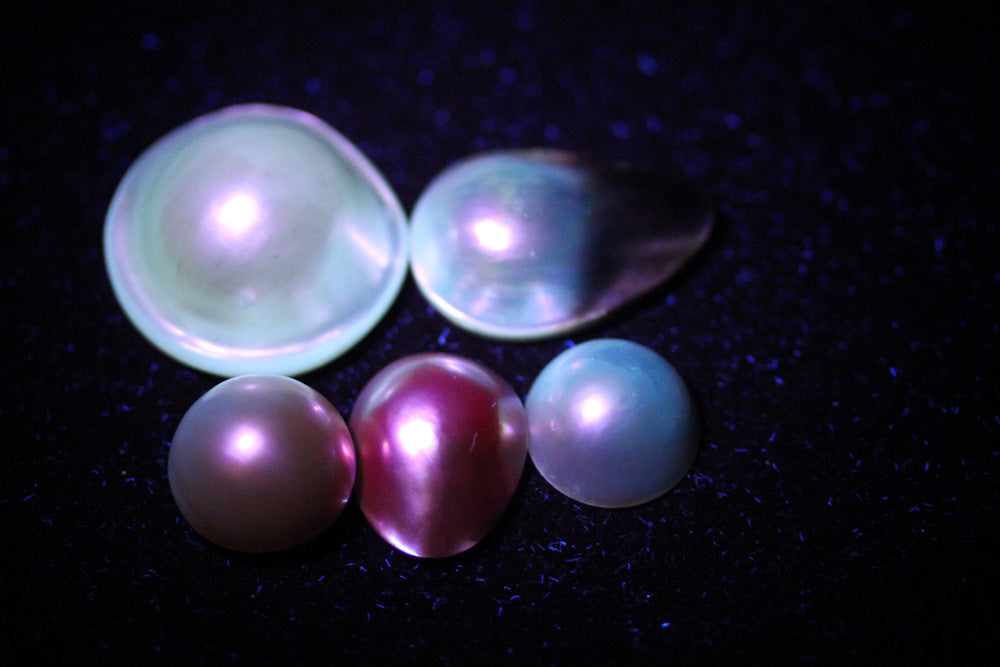
Sea of Cortez pearls are the ONLY pearls in the world to fluoresce red or pink under long-wave UV lighting. A built-in identification system from Mother Nature!
Q: What in your opinion is the most desirable attribute in a pearl?
For me it is orient. But especially when it is truly outspoken. The usual description for orient is: “the delicate play of colors that is seen around the pearl” is simply too bland for me. I like it when the pearls are caught in it, flaring in emerald green or in a vivid violet…and the pearl seems like a rainbow. This is heaven.
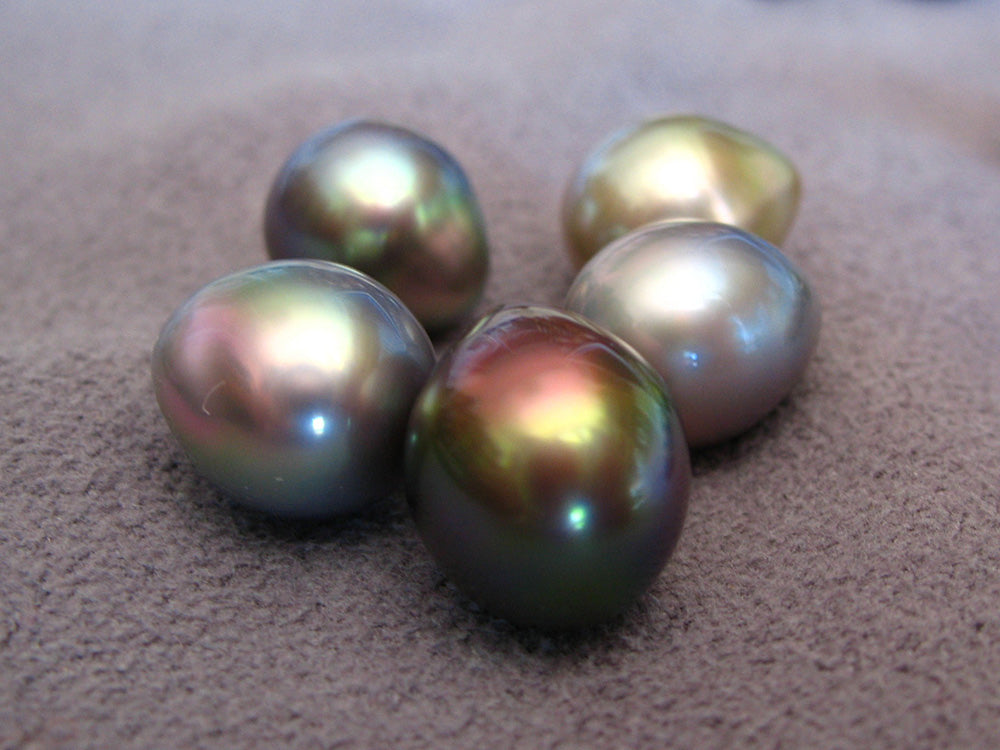
Sea of Cortez pearls possess some of the most intense orient ever glimpsed on cultured pearls; these colors are very rarely seen anywhere else in the world.
Q: Do you have an “all-time favorite” pearl that you’ve ever harvested?
Yes, and it is hard to say which one because there are many pearls that are amazing. I believe I have two all-time favorites: one is a pearl that I referred as a ‘Drop Dead Gorgeous Pearl’ (2008 harvest), it obviously had a drop shape and it was an obsidian black-blue color on its bottom and then shifted its rainbow colors from golden, violet, green and blue at the very tip. This pearl belongs to a very dear friend of mine that lives in Tel Aviv. The second one is a pearl I named ‘Matrioshka’ (2010 harvest) and that has this beautiful shape like a Russian doll, with a deep purple color and amazing emerald green overtone. This pearl resides in Los Angeles, owned by an amazing couple that I feel honored to call friends too. So, I am happy we found the appropriate pearl-loving people to take care of my unique beauties.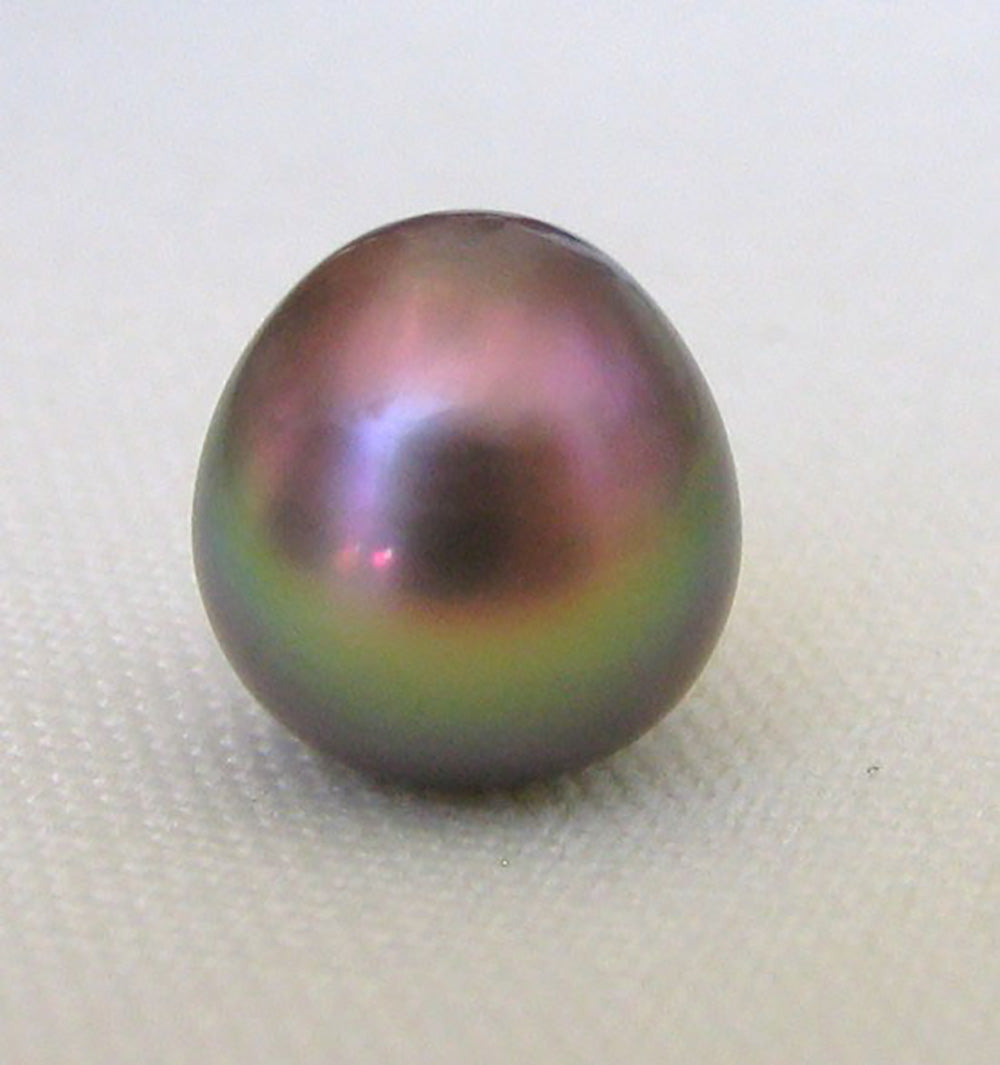
The "Drop-Dead Gorgeous" Sea of Cortez pearl from the June 2008 Harvest
Q: What is your favorite pearl color/overtone?
It’s a tie: Red and Blue pearls. Red would be a dark violet color surrounded by a very bright pink overtone, and blue is usually a dark blue body color surrounded by a purple or green overtone.
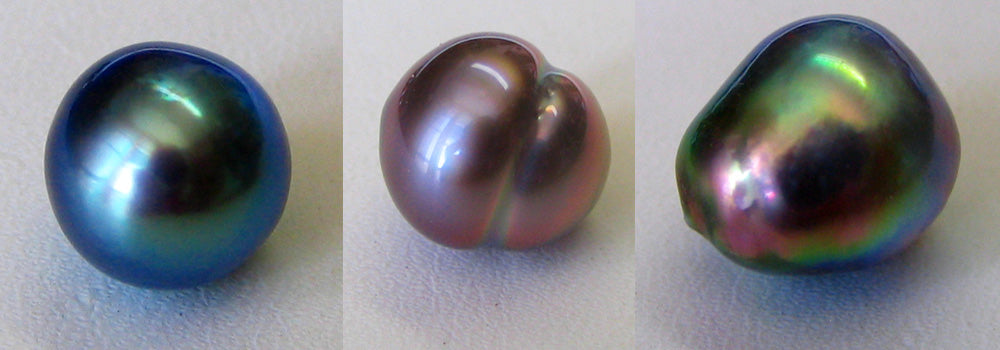
Exceptional Sea of Cortez Pearl Examples Showcasing Some of Douglas' Favorite Overtones.
Q: I know your harvests are pretty limited. How long do you think it would take to match a pearl necklace of gem-grade pearls?
If we match them by color … maybe 15-20 years, maybe even 30 years for colors like red or blue. If we just match them by size, shape, luster and quality and make them multi-colored strands then we’re talking just 4-5 years.
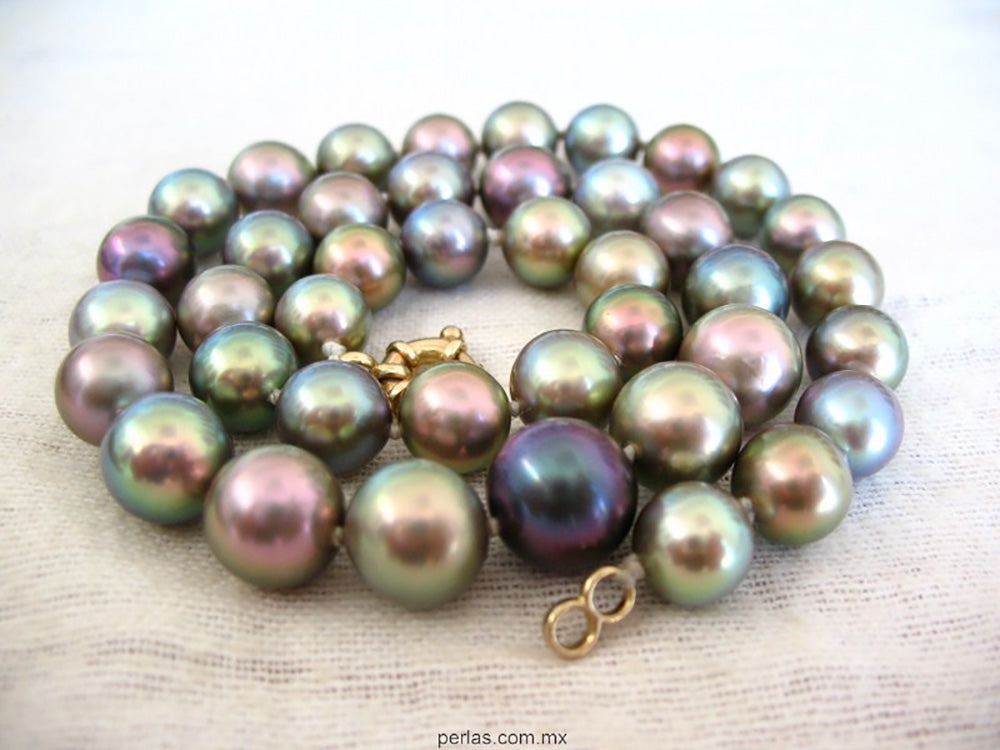
The ‘Bacochibampo Pearl Necklace’ was finished in 2010, and currently resides in Mexico. This single strand took approximately 4 years to create. Each Sea of Cortez necklace is a unique work or art, and absolutely a treasure. This is on my List of “Things I Must Have Someday!“
Q: What are your expectations for your 2014 harvest?
We are expecting a really great harvest this year. More pearls with higher qualities and great colors. Unfortunately I don’t foresee many large pearls (10.5 mm or larger) since this particular batch of oysters was not particularly large at the moment of being seeded. Colorwise, every year is a surprise, so I don’t know which colors will be coming out.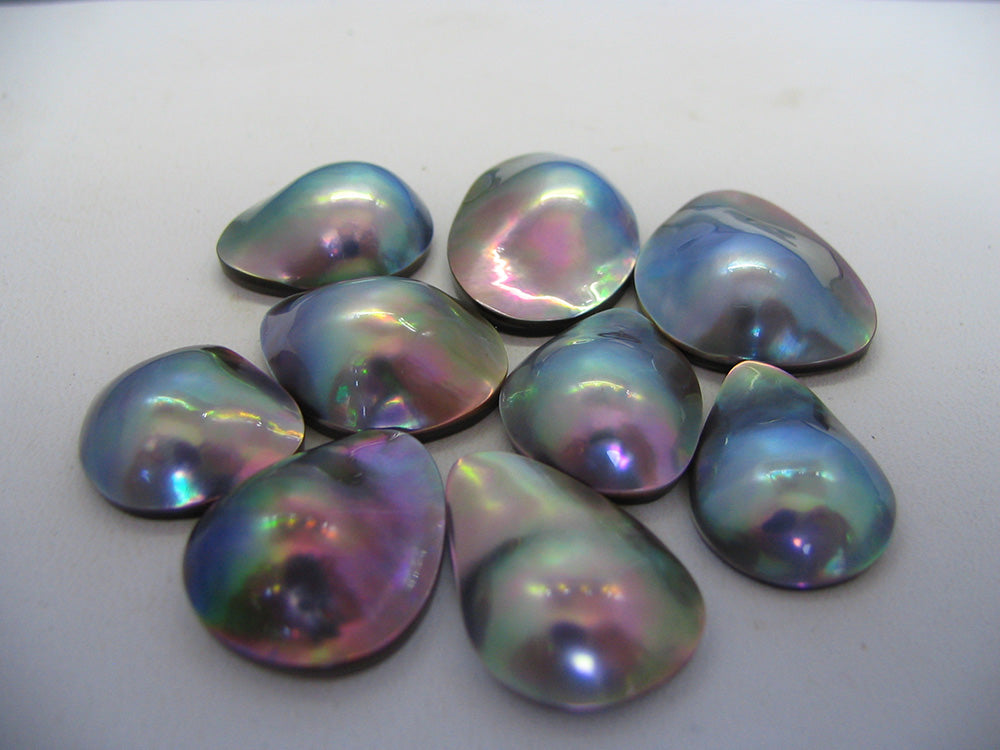
Sea of Cortez loose mabé pearls: the colors are so incredibly strong and saturated, it’s hard to take your eyes off of them.
Q: Could you tell us more about your mabé pearl production?
We always have a small production of mabé pearls, between 2,000 to 4,000 pieces per year. This next harvest we are expecting some 4,000 pieces and we really are hoping for larger size and better color. I consider our mabé pearls as the most beautiful and striking of all mabé pearls in production today. The colors and luster are amazing.
Q: So what are your big plans for the future?
The first plan is to be able to change with this changing environment. Most people take pearls for granted, but when you are on the frontline there is a terrible confrontation: the environment is changing and it may unleash terrible forces, the oysters need to adapt to a warmer ocean and an increase in acidity, and as farmers we need to adapt to these changes and continue producing these beautiful and unusual pearls.
Then comes the need to continue to increase the quality of our pearls, their size and the size of the harvest. We need more pearls in order for them to become less rare; as it is our yearly production represents a very small fraction of the world’s pearl production.
Finally, we will open up new “Cortez Pearl Boutiques” in Mexico to go where the customers are, revamp our official website (www.perlas.mx) to work on tablets and smartphones and will try to continue our free educational offer by means of our Cortez Pearl Blog.
I know I’m not the only one wishing him all the luck in the world!
~Ashley
Free 2-Day FedEx on all orders within the USA. Overnight delivery options start at $35.
Most orders ship within 1-2 business days, sometimes same day.
International shipping is affordable and fast. Most international packages arrive in 2-4 business days.
Your package is fully insured. If your order is lost or stolen before delivery, we got you covered.
Our Pricing Explained
Luxury Grade Pearls. Lower Prices.
Luxury Grade Pearls.
Lower Prices.
The true value of pearls lies in their quality. We sell true luxury grade pearls without traditional luxury store markups.
We source the worlds finest pearls and sell direct to customers like you. You can expect to save about 1/2 the cost of traditional retail.


Pure Pearls Pricing

Traditional Retail Pricing